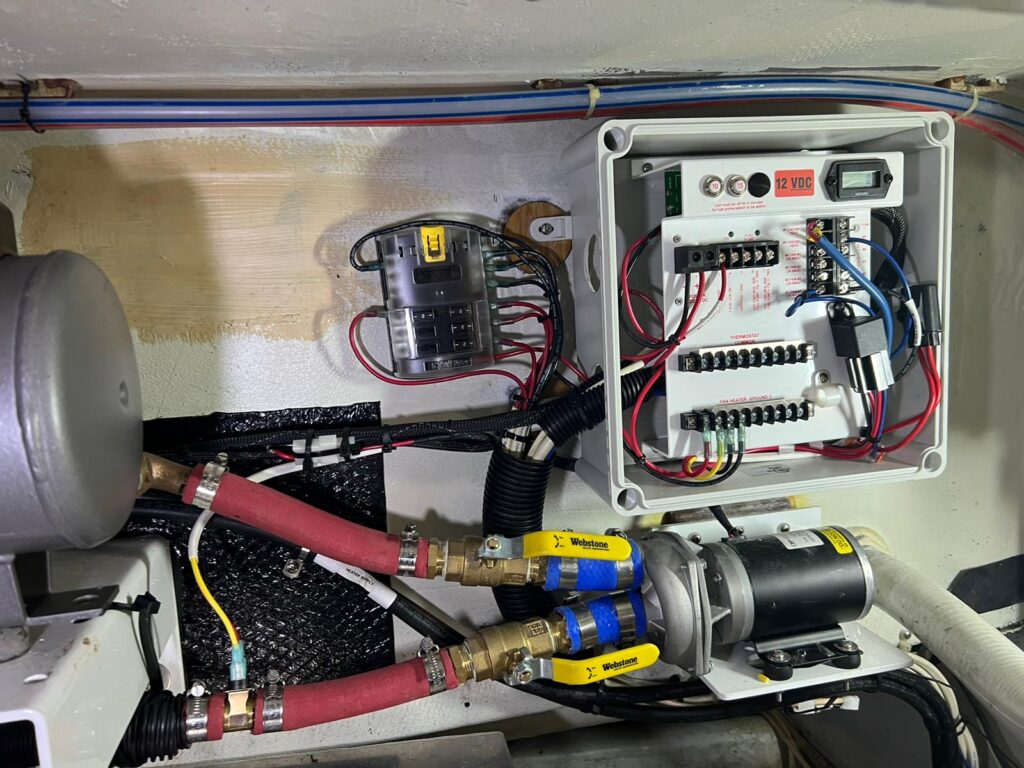When we bought the boat it didn’t have a functioning heater. We thought we might get it working or possibly replace it with a newer like model. Greg did his research and figured out that the heater was actually on the small side for the boat, possibly it had been working too hard all this time and that was part of why it wasn’t functioning. It made sense to replace the unit with a newer larger model and fee good about its efficiency.
We made many sketches of what we wanted the system to be like. The final decision included an overflow tank off of the expansion tank, a buffer tank to increase the system’s volume and efficiency, running through a heat exchanger with engine coolant so the engine could also heat the system, a summer loop, and going through the hot water tank as well. That way we can heat fresh water with either the engine or the heater and we can heat the whole boat with engine coolant. The summer loop closes off water going around the boat to the four heater units so in the summer we can use the circulation pump when we run the engine and we’ll have hot water for showers and dishes.


The old system was plumbed with metric PEX that went to all the heater units but the new system specified a larger diameter hose and we had a few leaks in the PEX and many connections to get it to the heater units… probably a good idea to run new hose. Greg thought up a cleaner way of going around the front of the boat with the hose to decrease the length of the run too. Taking out the old PEX happened fairly easily but getting the larger diameter new hose around had lots of challenging spots. The port to starboard wire and hose run is shown below, can you see the PEX anywhere?




We got it all out eventually and did some maintenance on the heat exchanger in cramped quarters, especially on the aft end. Boat yoga is good for you! Next came fine tuning where the new parts will go, the summer loop valve ended up going on the ceiling of the pump room over the water maker. The buffer tank got a little platform built for it back under the heater itself.



Lots of red hose running everywhere, water heater lines and fittings replaced now too. Aquastat on hot water heater’s out line (still PEX) also senses water temp to activate the heater if needed.


Shown here are the pump and heater on their new mounts along with the fancy water tight box with all the wiring. Put the lid on that box, insulate the exhaust, and fire up the system. It worked great, no leaks! Well, for the first year at least.

